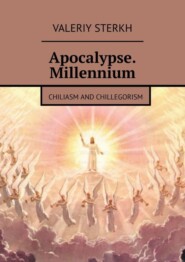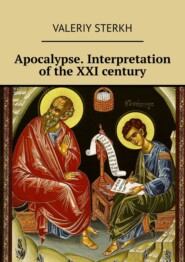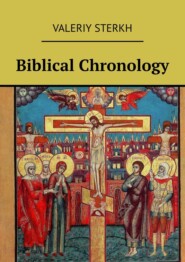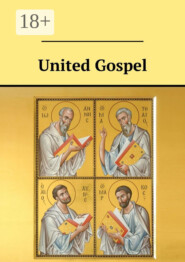По всем вопросам обращайтесь на: info@litportal.ru
(©) 2003-2024.
✖
Gospel harmony
Настройки чтения
Размер шрифта
Высота строк
Поля
Luke describes Jesus’ family traveling from Nazareth to Bethlehem to participate in the census, and then Mary gives birth to Jesus (Lk 2:1—7; UG 9). Matthew does not give us much detail about the birth of Jesus in Bethlehem (Mt 2:1). Here we see the agreement between the two Gospels.
The subsequent narratives in Matthew and Luke split ways, but they can, nevertheless, be connected by putting the events in chronological order:
The angel announces the birth of Jesus to the shepherds (Lk 2:8—14; UG 10). The shepherds worship Jesus (Lk 2:15—20; UG 11). Jesus is circumcised and named Jesus (Mt 1:25; Lk 2:21; UG 12). The days of purification; Jesus is brought to the temple (Lk 2:22—38; UG 13). The Magi worship Jesus (Mt 2:1—12; UG 14). Jesus’ family flees to Egypt (Mt 2:13—15; UG 15). The massacre of the innocent (Mt 2:16—18; UG 16). Return from Egypt, settling in Nazareth (Mt 2:19—23; Lk 2:39; UG 17).
If you read only Luke’s Gospel, you might get the impression that Jesus’ family went straight from Jerusalem to Nazareth. Matthew, however, says that they first went to Egypt. This seeming contradiction can be explained as follows. Luke writes, «And when they had performed all things according to the law of the Lord, they returned into Galilee, to their own city Nazareth» (Lk 2:39). Matthew talks about the flight to Egypt as a means of fulfilling the prophecy of Scripture: «That it might be fulfilled which was spoken of the Lord by the prophet, saying, out of Egypt have I called my son» (Mt 2:15; compare Hos 11:1). We may well regard the expression «according to the law of the Lord» as «fulfilling the prophecy of the law of the Lord (Scripture)». So, we can easily harmonize these two episodes.
The Twelve
Three out of four evangelists, Matthew, Mark, and Luke, describe the calling of the Twelve by Jesus. The names of the apostles appear in a somewhat different order in each Gospel.
Matthew: «Now the names of the twelve apostles are these; The first, Simon, who is called Peter, and Andrew his brother; James the son of Zebedee, and John his brother; Philip, and Bartholomew; Thomas, and Matthew the publican; James the son of Alphaeus, and Lebbaeus, whose surname was Thaddaeus; Simon the Canaanite, and Judas Iscariot, who also betrayed him» (Mt 10:2—4).
Mark: «And he ordained twelve, that they should be with him, and that he might send them forth to preach, And to have power to heal sicknesses, and to cast out devils: And Simon he surnamed Peter; And James the son of Zebedee, and John the brother of James; and he surnamed them Boanerges, which is, The sons of thunder: And Andrew, and Philip, and Bartholomew, and Matthew, and Thomas, and James the son of Alphaeus, and Thaddaeus, and Simon the Canaanite, And Judas Iscariot, which also betrayed him» (Mk 3:14—19).
Luke: «And when it was day, he called unto him his disciples: and of them he chose twelve, whom also he named apostles; Simon, (whom he also named Peter,) and Andrew his brother, James and John, Philip and Bartholomew, Matthew and Thomas, James the son of Alphaeus, and Simon called Zelotes, And Judas the brother [son – note. V.S.] of James, and Judas Iscariot, which also was the traitor» (Lk 6:13—16).
Let’s put together a harmonized list of the names of the Twelve:
1. Simon (Mt 10:2; Mk 3:16; Lk 6:14; Jn 1:42), the Rock (Mt 16:18; Jn 1:42), or Cephas in Aramaic (Jn 1:42), Peter in Greek (Mt 10:2; Mk 3:16; Lk 6:14; Jn 1:42). Son of Jonah (Mt 16:17; Jn 1:42), brother of Andrew (Mt 10:2; Mk 1:16; Lk 6:14; Jn 1:40). The third disciple of Jesus (Jn 1:35—40). Born in Bethsaida (Jn 1:44). Married (Mt 8:14; Mk 1:30; Lk 4:38; 1 Cor 9:5), had children (Clement of Alexandria. Stromata, 3.6.52).
2. Andrew [the First-Called] (Mt 10:2; Mk 3:18; Lk 6:14). Son of Jonah (Mt 16:17; Jn 1:42), brother of Simon Peter (Mt 10:2; Mk 1:16; Lk 6:14; Jn 1:40). Jesus’ first disciple (Jn 1:35—40). Born in Bethsaida (Jn 1:44).
3. James (Mt 10:2; Mk 3:17; Lk 6:14). Son of Zebedee (Mt 10:2; Mk 3:17; Lk 5:10; Jn 21:2), brother of John (Mt 10:2; Mk 3:17). Both brothers were also called Boanerges, «sons of thunder» (Mk 3:17). The fifth or sixth disciple of Jesus (Mt 4:18—22; Mk 1:16—20; Lk 5:1—11). Born in Galilee (Mt 4:18—22; Mk 1:16—20; Lk 5:1—11).
4. John [the Theologian] (Mt 10:2; Mk 3:17; Lk 6:14). Son of Zebedee (Mt 10:2; Mk 3:17; Lk 5:10; Jn 21:2), brother of James (Mt 10:2; Mk 3:17). Both brothers were also called Boanerges, «sons of thunder» (Mk 3:17). The fifth or sixth disciple of Jesus (Mt 4:18—22; Mk 1:16—20; Lk 5:1—11). Born in Galilee (Mt 4:18—22; Mk 1:16—20; Lk 5:1—11).
5. Philip (Mt 10:3; Mk 3:18; Lk 6:14; Jn 1:43). The second disciple of Jesus (Jn 1:35—43). Born in Bethsaida (Jn 1:44). Had daughters (Act 21:8—9; Eusebius of Caesarea. Church History, 3.31.3).
6. Nathanael (Jn 1:45—50; 21:2), also known as Bartholomew (Mt 10:3; Mk 3:18; Lk 6:14). Son of Talmai [Tholmai] (Aram. «bar Talamai» = «son of Talmai»). The fourth disciple of Jesus (Jn 1:43—51). Born in Cana of Galilee (Jn 21:2).
7. Thomas (Mt 10:3; Mk 3:18; Lk 6:15; Jn 11:16), also called the Twin [Hebrew: Thoma; Greek: Didymos] (Jn 11:16). Probably born in Galilee (Jn 21:1—2).
8. Levi (Mk 2:14; Lk 5:27) Matthew (Mt 10:3; Mk 3:18; Lk 6:15), formerly a tax collector (Mt 9:9; Mk 2:14; Lk 5:27). Son of Alphaeus (Mk 2:14). The seventh disciple of Jesus (Mt 9:9—13; Mk 2:13—17; Lk 5:27—32). Originally from Capernaum (Mt 8—9; Mk 2).
9. James of Alphaeus (Mt 10:3; Mk 3:18; Lk 6:15), also called James the Less (Mk 15:40). Son of «the other» Alphaeus [not to be confused with Levi Matthew’s father] and «the other» Mary; he had a brother named Josiah (Mt 27:56, 61; Mk 15:40, 47). Probably a cousin of Jesus (Mk 6:3; Jm). Born in Galilee (Mt 27:55—56; Mk 15:40—41).
10. Jude (Lk 6:16; Jn 14:22) Levi (Mt 10:3), also called Thaddeus (Mt 10:3; Mk 3:18). Son of Jacob [in some translations: brother of Jacob] (Lk 6:16; Act 1:13). Probably a cousin of Jesus (Mk 6:3; Jude). Probably born in Galilee.
11. Simon the Canaanite (Mt 10:4; Mk 3:18; Lk 6:15), named Zealot (Lk 6:15). Probably a cousin of Jesus (Mk 6:3). Probably born in Galilee.
12. Judas Iscariot (Mt 10:4; Mk 3:19; Lk 6:16; Jn 6:71), who became a traitor. Son of Simon (Jn 6:71). Born in the suburbs of Jerusalem (Heb. «ish-keriyot» = «a man from the outskirts of the city»).
Generally, the lists given by the evangelists agree between each other, but we also have to take into account the fact that some of the apostles had double names.
The legion of demons
The Gospels of Matthew, Mark, and Luke contain an account of the demon-possessed man healed by Jesus near the Lake of Gennesaret (Mt 8:28—34; Mk 5:1—21; Lk 8:26—39; UG 66). Each Gospel gives different details about this episode. Let us first consider similarities between them.
These events take place after the taming of the storm on the Lake of Gennesaret (Mt 8:18—27; Mk 4:35—41; Lk 8:22—25; UG 65). The episode takes place on the opposite shore from Galilee, in the country of the Gadarenes, or Gergesenes (Mt 8:28; Mk 5:1; Lk 8:26). In this area, there were mountains with cave tombs that were used by the demon possessed men and women as shelters (Mt 8:28, 32; Mk 5:2, 13; Lk 8:27, 33). Jesus healed the man by casting out the demons and sending them into the pigs. The pigs threw themselves into the lake (Mt 8:30—32; Mk 5:11—13; Lk 8:32—33). Obviously, it is one and the same event.
Matthew tells the story in brief, mentioning two demoniacs (Mt 8:28) healed by Jesus. Mark and Luke give more detail but mention only one man possessed by many demons (Mk 5:2; Lk 8:27). According to Mark and Luke, there was a legion of demons (Mk 5:9; Lk 8:30). Mark goes on to say that the number of demons was about two thousand (Mk 5:13). Considering that a Roman legion consisted of 2,000 to 10,000 infantrymen, it is no exaggeration. However, Mark and Luke seem to disagree with Matthew’s statement about the two demoniacs.
The principle of harmonization says that the resulting text should not contradict any of the Gospels. Since Matthew was one of the Twelve and most likely an eyewitness to what happened, we can fully trust his account of the two demoniacs without raising questions. Matthew does not mention the legion of demons or their number. But he says that the exorcised demons were sent into a large herd of pigs (Mt 8:30; compare Lk 8:32). Here he comes close to Mark and Luke.
According to Mark and Luke, there was only one demoniac who approached Jesus. There was a legion of demons speaking through him (Mk 5:12; Lk 8:31). From Matthew’s account, one can infer that the legion of demons spoke to Jesus all at once (Mt 8:29, 31). Again, we see that the accounts come quite close to each other.
Could it be that Mark and Luke mentioned only one demoniac because only one approached Jesus, or maybe because he was more ferocious than the other one or had more demons? Possibly. But it doesn’t seem to be the main reason. The clue seems to appear at the end of Mark and Luke’s accounts where only one of the healed returned to thank Jesus and asked if he could follow him. When Jesus said no, he went off and started talking about what had happened (Mk 5:18—20; Lk 8:38—39).
From this perspective, the differences in the accounts of the evangelists seem negligible.
The withered fig tree
On Monday of Holy Week, Jesus was hungry and, coming up to a fig tree and finding no fruit, cursed it (Mt 21:18—22; Mk 11:12—14, 11:20—26; UG 143, 145). According to Matthew, the fig tree withered immediately (Mt 21:19). Then he says, «And when the disciples saw it, they marvelled, saying, How soon is the fig tree withered away!» (Mt 21:20). In Mark, the apostles found the fig tree withered only on the following morning (Mk 11:20). Is there an irreconcilable contradiction here?
Since Mark specifies the moment of discovering the withered fig tree precisely (Mk 11:20) and Matthew is vague (Mt 21:20), it would make sense to give preference to Mark’s version here. As to the actual time the fig tree withered, Matthew seems more accurate (Mt 21:19) while Mark only mentions that the disciples heard the curse (Mk 11:14).
We might speculate that the fig tree withered soon after Jesus had cursed it, but the disciples only saw it the next day. In this case, the apparent contradiction is removed.
Generally, the two evangelists present their narratives differently. Mark relates the story in chronological order, capturing Peter’s memories in exact detail. Matthew tells the fig tree story in the form of a parable, alluding to Luke’s parable of the barren fig tree (Lk 13:6—9; UG 113). That is why Matthew presents the episode as a whole, while Mark divides it up into two parts with the story of the temple cleansing stuck in between (Mk 11:15—19; compare Mt 21:12—17; Lk 19:45—46; UG 144). Matthew places the fig tree account after the account of driving out the merchants because the ending of the fig tree story happened after it. This may give the impression that Jesus first drove out the merchants and then cursed the fig tree, but in Mark, the cursing of the fig tree preceded the cleansing of the temple. This «inconsistency» can be explained by Matthew’s desire to present the story in the form of a parable.










